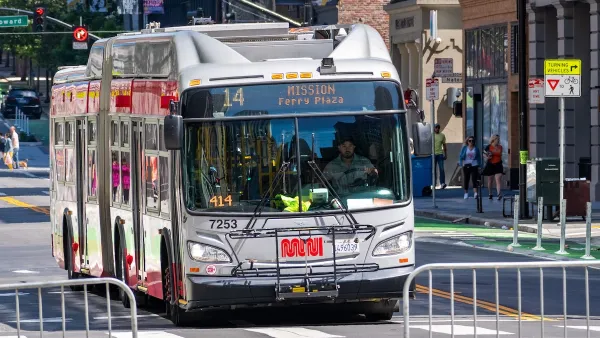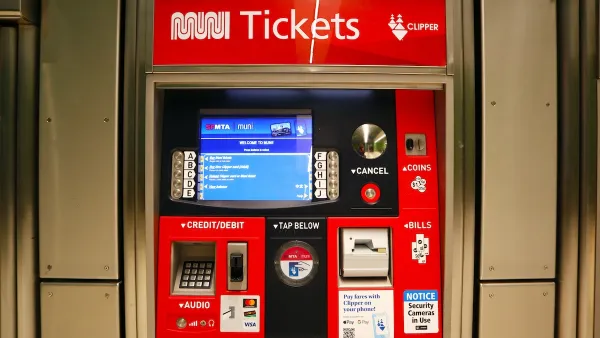Transitmix, an online tool for sketching out and testing fantasy transit routes, has evolved beyond its original mass appeal to become a trusted tool for transportation planners around the country.
Eric Jaffe follows up on the "design-your-own-bus-route tool called Transitmix" released last summer. The mass appeal of the product is producing a trove of crowd-sourced data about how people would improve their city's transit if they could: "In six months since the beta version launched," reports Jaffe, "users have created some 50,000 transit maps in 3,600 cities around the world."
The popularity of the tool, coupled with a strong positive response from professional transportation planners, led the makers of Transitmix to launch the online tool as a new business. According to Jaffe, last month "Transitmix launched a customizable 'pro' version the company believes will help transit agencies not only improve their local bus systems but also explain to the public the logic behind these service decisions more clearly."
"The Oregon Department of Transportation has already contracted to use the tool. Hashemi says he's in conversations with up to 80 other agencies to form similar partnerships."
Jaffe goes on to show examples of how Transitmix works as well as insight from Matthew Barnes of Oregon DOT's Rail and Public Transit Division about how ODOT will use the system to model planning scenarios. The final benefit of the Transitmix tool examined by Jaffe's coverage is its potential as a vehicle for public feedback—even in real time. Already, the San Francisco Municipal Transportation Agency is using a modified version of Transitmix for just that purpose.
FULL STORY: The Incredibly Simple Fantasy Bus Route Tool Even the Pros Love

Planetizen Federal Action Tracker
A weekly monitor of how Trump’s orders and actions are impacting planners and planning in America.

Maui's Vacation Rental Debate Turns Ugly
Verbal attacks, misinformation campaigns and fistfights plague a high-stakes debate to convert thousands of vacation rentals into long-term housing.

San Francisco Suspends Traffic Calming Amidst Record Deaths
Citing “a challenging fiscal landscape,” the city will cease the program on the heels of 42 traffic deaths, including 24 pedestrians.

Defunct Pittsburgh Power Plant to Become Residential Tower
A decommissioned steam heat plant will be redeveloped into almost 100 affordable housing units.

Trump Prompts Restructuring of Transportation Research Board in “Unprecedented Overreach”
The TRB has eliminated more than half of its committees including those focused on climate, equity, and cities.

Amtrak Rolls Out New Orleans to Alabama “Mardi Gras” Train
The new service will operate morning and evening departures between Mobile and New Orleans.
Urban Design for Planners 1: Software Tools
This six-course series explores essential urban design concepts using open source software and equips planners with the tools they need to participate fully in the urban design process.
Planning for Universal Design
Learn the tools for implementing Universal Design in planning regulations.
Heyer Gruel & Associates PA
JM Goldson LLC
Custer County Colorado
City of Camden Redevelopment Agency
City of Astoria
Transportation Research & Education Center (TREC) at Portland State University
Jefferson Parish Government
Camden Redevelopment Agency
City of Claremont




























